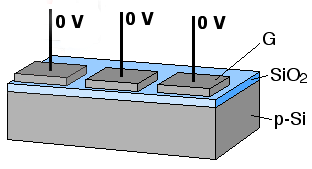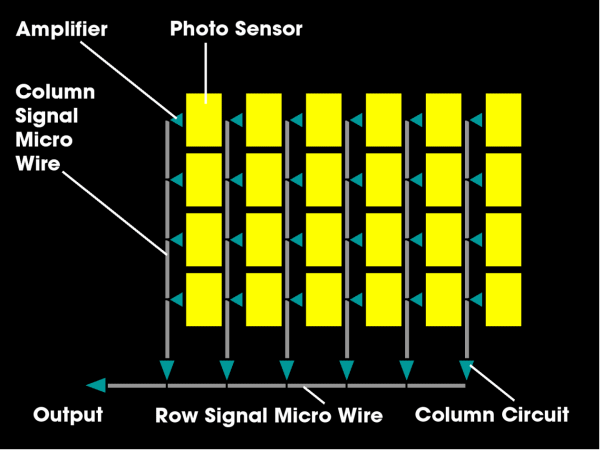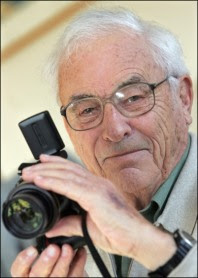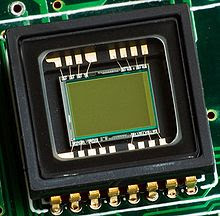Today (May 7, 2011) the Canadian scientist Willard Sterling Boyle commemorates the Nobel Prize for detecting charge-coupled devices (CCD).

Willard Sterling Boyle was born on August 19, 1924, in
Amherst, Nova Scotia, Canada. When he was three, he moved to Quebec with his
parents. He was educated at home by her mother until she was 14 and then
attended high school at Lower Canada College in Montreal. He later attended
McGill University in Canada. But after graduating in 1943, he joined the Royal
Canadian Navy (Royal Canadian Navy) during World War II. He was later
transferred to the British Royal Navy where he was a Spitfire airliner aboard
an aircraft carrier. He earned a bachelor's degree in science in 1947, a
master's degree in science in 1948, and a doctorate from McGill University in
1950.



After graduating with a doctorate in Boyle, he worked at
Canada's Radiation Lab. He then studied physics for two years at the Royal
Military College of Canada. In 1953, Boyle joined Bell Labs, wherein in 1962 he
and Don Nelson invented the still-visible red ruby. He was named in the first
patent on semiconductor photocopiers. He was later named director of the Space
Science and Exploratory Studies Department, part of Bell comm, a company under
Bell Laboratory. Apollo later assisted with the space program, particularly in
the selection of landing sites on the Moon. He returned to Bell Laboratory in
1964 and participated in the development of the microbiome.



In 1969, Boy and Zarczu eCam invented a charge-coupled
device, CCD. The two received the Stuart Ballantine Medal in 1973 from the
Franklin Institute and the Stuart Ballantine Medal. He won the IEEE Morris N.
Liebmann Memorial Award in 1974, the Charles Stark Draper Prize in 2006, and
the 2009 Nobel Prize in Physics. Boyle served as executive director of the Bell
Labs Laboratory from 1975 until his retirement in 1979. After his retirement,
he settled in Wallace, Nova Scotia, Nova Scotia, Canada. There, along with his
wife, he started an art gallery to help. Nobel prize-winning Canadian scientist
Willard Sterling Boyle left his world on May 7, 2011, at the age of 86, in the
state of Nova Scotia.
Source By:
Wikipedia
Information: Dr. P. Ramesh, Assistant Professor of Physics, Nehru
Memorial College, Puthanampatti, Trichy.
Get information like this
https://t.me/joinchat/jpqj3jQLN51kYTk9
Join Telegram Group.
https://chat.whatsapp.com/HHC5m0Jz3Ue1E8ilgta0YT
Join WhatsApp Group
Thanks.
Also, Read
🛑👍 CSIR-NET Physics Materials and Problems
🛑📕 21 GB and Hundreds of Physics E-Books Collection.
🛑🛥️ How does an Electric Motor work? (DC Motor).
🛑🤹♂️ Science Academies' Summer Research Fellowship Programme for Students and Teachers 2022.
🛑🔌 How does a Transformer work - Working Principle electrical engineering.
🛑🎙️ Transistors Explained - How transistors work.
🛑🔥⚡ How Thermocouples Work - basic working principle.
🛑🔌 Voltage Explained - What is Voltage? Basic electricity potential difference
🛑🔌 What is CURRENT– electric current explained, electricity basics.
Also, Read
🛑👍 CSIR-NET Physics Materials and Problems
🛑📕 21 GB and Hundreds of Physics E-Books Collection.
🛑🛥️ How does an Electric Motor work? (DC Motor).
🛑🤹♂️ Science Academies' Summer Research Fellowship Programme for Students and Teachers 2022.
🛑🔌 How does a Transformer work - Working Principle electrical engineering.
🛑🎙️ Transistors Explained - How transistors work.
🛑🔥⚡ How Thermocouples Work - basic working principle.
🛑🔌 Voltage Explained - What is Voltage? Basic electricity potential difference
🛑🔌 What is CURRENT– electric current explained, electricity basics.


.jpg)
No comments:
Post a Comment